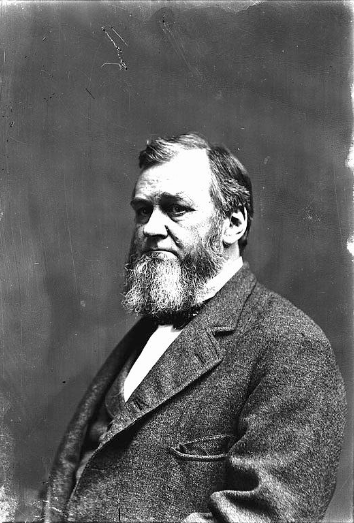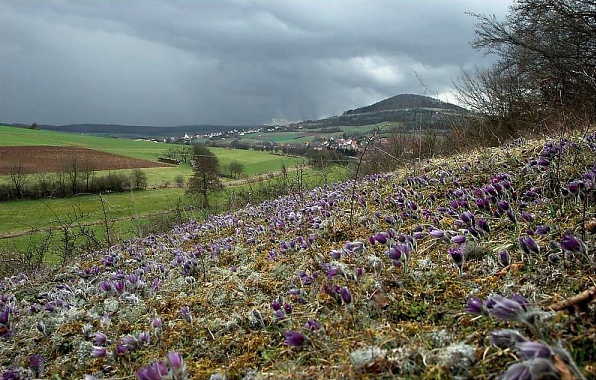|
Vesper Sparrow
The vesper sparrow (''Pooecetes gramineus'') is a medium-sized New World sparrow. The only member of the genus ''Pooecetes'', it is a pale sparrow with brown streaks that breeds across the grasslands of northern North America. It migrates to winter in the southern United States and Mexico. Taxonomy The vesper sparrow was formally described in 1789 by the German naturalist Johann Friedrich Gmelin in his revised and expanded edition of Carl Linnaeus's ''Systema Naturae''. He placed it with the finches in the genus ''Fringilla'' and coined the binomial name ''Fringilla graminea''. He gave the locality as New York. Gmelin based his own description on those for the "grass finch" that had been described by John Latham in 1783 and by Thomas Pennant in 1785. The vesper sparrow is now the only species placed in the genus ''Pooecetes'' that was introduced in 1858 by the American naturalist Spencer Baird. The genus name combines the Ancient Greek ποα (''poa'') meaning "grass" with ... [...More Info...] [...Related Items...] OR: [Wikipedia] [Google] [Baidu] |
Spencer Fullerton Baird
Spencer Fullerton Baird (; February 3, 1823 – August 19, 1887) was an American naturalist, ornithologist, ichthyologist, Herpetology, herpetologist, and museum curator. Baird was the first curator to be named at the Smithsonian Institution. He eventually served as assistant Secretary of the Smithsonian from 1850 to 1878, and as Secretary from 1878 until 1887. He was dedicated to expanding the natural history collections of the Smithsonian which he increased from 6,000 specimens in 1850 to over 2 million by the time of his death. He also served as the U.S. United States Fish Commission, Commissioner of Fish and Fisheries from 1871 to 1887 and published over 1,000 works during his lifetime. Early life and education Spencer Fullerton Baird was born in Reading, Pennsylvania in 1823. His mother was a member of the prominent Philadelphia Biddle family; he was a nephew of Speaker of the Pennsylvania Senate Charles B. Penrose and a first cousin, once removed, of U.S. Senator Boies Penr ... [...More Info...] [...Related Items...] OR: [Wikipedia] [Google] [Baidu] |
Subspecies
In Taxonomy (biology), biological classification, subspecies (: subspecies) is a rank below species, used for populations that live in different areas and vary in size, shape, or other physical characteristics (Morphology (biology), morphology), but that can successfully interbreed. Not all species have subspecies, but for those that do there must be at least two. Subspecies is abbreviated as subsp. or ssp. and the singular and plural forms are the same ("the subspecies is" or "the subspecies are"). In zoology, under the International Code of Zoological Nomenclature, the subspecies is the only taxonomic rank below that of species that can receive a name. In botany and mycology, under the International Code of Nomenclature for algae, fungi, and plants, other infraspecific name, infraspecific ranks, such as variety (botany), variety, may be named. In bacteriology and virology, under standard International Code of Nomenclature of Prokaryotes, bacterial nomenclature and virus clas ... [...More Info...] [...Related Items...] OR: [Wikipedia] [Google] [Baidu] |
Birds Of North America
The lists of birds in the light blue box below are divided by biological family. The lists are based on ''The AOS Check-list of North American Birds'' of the American Ornithological Society and ''The Clements Checklist of Birds of the World'' supplemented with checklists from Panama, Greenland, and Bermuda. It includes the birds of Greenland, Canada, the United States (excluding Hawaii), Mexico, Central America, Bermuda, and the West Indies. Taxonomy The taxonomic treatment (designation and sequence of orders, families and species) and nomenclature (common and scientific names) used in the accompanying bird lists adheres to the conventions of the AOS's (2019) ''Check-list of North American Birds'', the recognized scientific authority on the taxonomy and nomenclature of North America birds. The AOS's Committee on Classification and Nomenclature, the body responsible for maintaining and updating the ''Check-list'', "strongly and unanimously continues to endorse the biological spe ... [...More Info...] [...Related Items...] OR: [Wikipedia] [Google] [Baidu] |
American Sparrows
New World sparrows are a group of mainly New World passerine birds, forming the family Passerellidae. They are seed-eating birds with conical bills, brown or gray in color, and many species have distinctive head patterns. Although they share the name sparrow, New World sparrows are more closely related to Old World buntings than they are to the Old World sparrows (family Passeridae). New World sparrows are also similar in both appearance and habit to finches, with which they sometimes used to be classified. Taxonomy The genera now assigned to the family Passerellidae were previously included with the buntings in the family Emberizidae. A phylogenetic analysis of nuclear and mitochondrial DNA sequences published in 2015 found that the Passerellidae formed a monophyletic group that had an uncertain relationship to the Emberizidae. Emberizidae was therefore split and the family Passerellidae resurrected. It had originally been introduced, as the subfamily Passerellinae, by the Ger ... [...More Info...] [...Related Items...] OR: [Wikipedia] [Google] [Baidu] |
Habitat Loss
Habitat destruction (also termed habitat loss or habitat reduction) occurs when a natural habitat is no longer able to support its native species. The organisms once living there have either moved elsewhere, or are dead, leading to a decrease in biodiversity and Abundance (ecology), species numbers. Habitat destruction is in fact the leading cause of biodiversity loss and species extinction worldwide. Humans contribute to habitat destruction through the Exploitation of natural resources, use of natural resources, agriculture, industrial production and urbanization (urban sprawl). Other activities include mining, logging and trawling. Environmental factors can contribute to habitat destruction more indirectly. Geological processes, climate change, introduced species, introduction of invasive species, ecosystem nutrient depletion, water pollution, water and noise pollution are some examples. Loss of habitat can be preceded by an initial habitat fragmentation. Fragmentation and lo ... [...More Info...] [...Related Items...] OR: [Wikipedia] [Google] [Baidu] |
Land Conversion
Land development is the alteration of landscape in any number of ways, such as: * Changing landforms from a natural or semi-natural state for a purpose such as agriculture or housing * Subdividing real estate into lots, typically for the purpose of building homes * Real estate development or changing its purpose, for example by converting an unused factory complex into a condominium History Land development has a history dating to Neolithic times around 8,000 BC. From the dawn of civilization, the process of land development has elaborated the progress of improvements on a piece of land based on codes and regulations, particularly housing complexes. Economic aspects In an economic context, land development is also sometimes advertised as land improvement or land amelioration. It refers to investment making land more usable by humans. For accounting purposes, it refers to any variety of projects that increase the value of the process. Most are depreciable, but some land improv ... [...More Info...] [...Related Items...] OR: [Wikipedia] [Google] [Baidu] |
Courtship Display
A courtship display is a set of display behaviors in which an animal, usually a male, attempts to attract a mate; the mate exercises choice, so sexual selection acts on the display. These behaviors often include ritualized movement ("dances"), vocalizations, mechanical sound production, or displays of beauty, strength, or agonistic ability. Male display In some species, males will perform ritualized movements to attract females. The male six-plumed bird-of-paradise ( ''Parotia lawesii'') exemplifies male courtship display with its ritualized " ballerina dance" and unique occipital and breast feathers that serve to stimulate the female visual system. In '' Drosophila subobscura,'' male courtship display is seen through the male's intricate wing scissoring patterns and rapid sidestepping. These stimulations, along with many other factors, result in subsequent copulation or rejection. In other species, males may exhibit courtship displays that serve as both visual and auditor ... [...More Info...] [...Related Items...] OR: [Wikipedia] [Google] [Baidu] |
Nesting Season
Birds are a group of warm-blooded vertebrates constituting the class Aves (), characterised by feathers, toothless beaked jaws, the laying of hard-shelled eggs, a high metabolic rate, a four-chambered heart, and a strong yet lightweight skeleton. Birds live worldwide and range in size from the bee hummingbird to the common ostrich. There are over 11,000 living species and they are split into 44 orders. More than half are passerine or "perching" birds. Birds have wings whose development varies according to species; the only known groups without wings are the extinct moa and elephant birds. Wings, which are modified forelimbs, gave birds the ability to fly, although further evolution has led to the loss of flight in some birds, including ratites, penguins, and diverse endemic island species. The digestive and respiratory systems of birds are also uniquely adapted for flight. Some bird species of aquatic environments, particularly seabirds and some waterbir ... [...More Info...] [...Related Items...] OR: [Wikipedia] [Google] [Baidu] |
Dust Bathing
Dust bathing (also called sand bathing) is an animal behavior characterized by rolling or moving around in dust, dry earth or sand, with the likely purpose of removing parasites from fur, feathers or skin. Dust bathing is a Comfort behaviour in animals, maintenance behavior performed by a wide range of mammalian and bird, avian species. For some animals, dust baths are necessary to maintain healthy feathers, skin, or fur, similar to bathing in water or Wallowing in animals, wallowing in mud. In some mammals, dust bathing may be a way of transmitting Scent marking, chemical signals (or pheromones) to the ground which marks an individual's Territory (animal), territory. Birds Birds crouch close to the ground while taking a dust bath, vigorously wriggling their bodies and flapping their wings. This disperses loose substrate into the air. The birds spread one or both wings which allows the falling substrate to fall between the feathers and reach the skin. The dust bath is ofte ... [...More Info...] [...Related Items...] OR: [Wikipedia] [Google] [Baidu] |
Dry Grassland
The key characteristic of dry grasslands is that they have low-growing plants, causing the area to be quite open. They also have a mottled structure, which leads to a biome with sunny or semi-shaded areas. On top of that, their soil is relatively dry and nutrient-poor. There are, however, types of grasslands with a higher humus and nutrient content. The soil of these areas overlie acid rocks or deposits such as sands and gravels. Dry grasslands belong to different zones such as: the natural zonal or azonal/extrazonal vegetation and the semi-natural vegetation. Overall, there are 13 classes that fall under dry grasslands. Dry grassland areas are very important to biodiversity as they contain a wide range of plant and animal species. European dry grasslands have the highest small-scale species densities amongst plant communities. This is why conservation efforts have become vital for dry grasslands, to ensure the continuance of its vast diversity and to help the many endangered spe ... [...More Info...] [...Related Items...] OR: [Wikipedia] [Google] [Baidu] |
Song Sparrow
The song sparrow (''Melospiza melodia'') is a medium-sized New World sparrow. Among the native sparrows in North America, it is easily one of the most abundant, variable and adaptable species. Description Adult song sparrows have brown upperparts with dark streaks on the back and are white underneath with dark streaking and a dark brown spot in the middle of the breast. They have a brown cap and a long brown rounded tail. Their face is gray with a brown streak through each eye. They are highly variable in size across numerous subspecies (for subspecies details, see below). The body length ranges from and wingspan can range from . Body mass ranges from . The average of all races is but the widespread nominate subspecies (''M. m. melodia'') weighs only about on average. The maximum lifespan in the wild is 11.3 years. The eggs of the song sparrow are brown with greenish-white spots. Females lay three to five eggs per clutch, with an average incubation time of 13–15 days befor ... [...More Info...] [...Related Items...] OR: [Wikipedia] [Google] [Baidu] |








